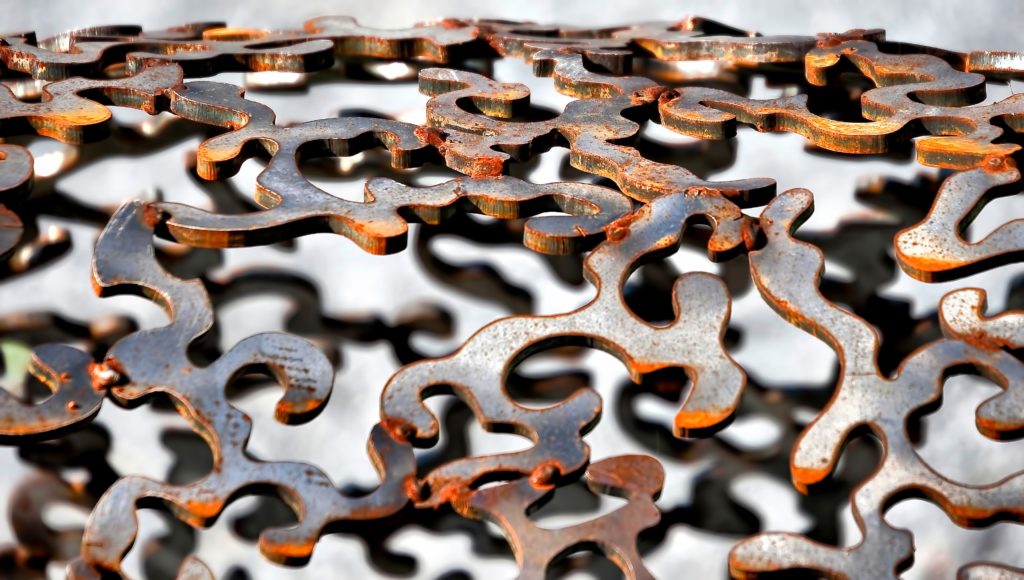The most common pickling solution used to remove scale produced by annealing austenitic stainless steel in the air is 10 to 15 percent nitric acid plus 1 to 3 percent hydrofluoric acid.

When stainless steel has been heated to elevated temperatures, such as during annealing or welding, an oxide scale will form on the surface unless the material is completely surrounded by a protective atmosphere. Any such oxides should be removed to restore the stainless steel to its optimum corrosion resistant condition. Because they may vary in nature and composition, there is no single acid or process that will universally remove all types of oxides.
The most common pickling solution used to remove scale produced by annealing austenitic stainless steel in the air is 10 to 15 percent nitric acid plus 1 to 3 percent hydrofluoric acid. The solution is usually used at temperatures of 120 to 140°F (50 to 60°C). This acid mixture efficiently removes oxides, loosely embedded iron and chromium depleted layers, and leaves the stainless steel surface in a clean, passivated condition. For light-scale, the hydrofluoric acid is usually about 1 percent and for heavier scales, the HF content may be increased to 2 to 3 percent.
Sulfuric acid 8 to 12 percent with 2 percent rock salt (NaCl) at 150 to 170°F (65 to 77°C) is well suited for handling ferritic or martensitic stainless steels. When the oxide scale is heavy and tenacious the stainless steel may be treated for 5 to 10 minutes in a bath of 8 to 10 percent sulfuric acid at a temperature of 150 to 160°F (65 to 71°C). Upon removal from the bath, the part should be scrubbed to remove the sludge and after rinsing, pickling can be finished in a nitric-hydrofluoric acid pickling solution.
When the above solutions cannot be used at the recommended temperature, they may be used at room temperature but it is usually necessary to strengthen the acid concentration. A cold solution takes longer to act and agitation of the part can be helpful.
During welding, some discoloration, which is a thin oxide layer, will be evident in the heated area near the weld. Mechanical removal or this heat tint should be limited to clean glass bead blasting, flapper wheels, aluminum oxide discs, and wire brushing with austenitic stainless steel wire brushes. Sand and grit blasting should be prohibited. Pickling will remove the smeared surface layer left by these mechanical cleaning operations restoring much of the corrosion resistance lost during these mechanical cleaning operations. Electrocleaning with a handheld electro cleaning tool is an equally effective alternative to pickling for heat tint removal.